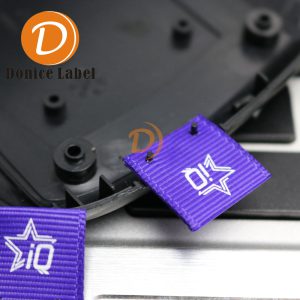Cleaning instruction label
A cleaning instruction label provides essential information on how to properly clean and care for a garment, fabric, or textile product. It is an important tool to ensure that items maintain their quality, appearance, and longevity by guiding the user on the correct washing, drying, and ironing methods. These labels often feature both symbols and written instructions to accommodate a wide range of consumers and ensure they understand the proper care required.
Key Features of a Cleaning Instruction Label:
Clear Care Symbols
Cleaning instruction labels typically include internationally recognized symbols that represent washing, drying, ironing, and professional cleaning instructions. These symbols make it easy for users to follow care directions without language barriers.
Washing Instructions
Washing symbols provide information about:
Hand wash or machine wash (including the appropriate water temperature).
Whether the garment should be washed on a gentle cycle or a normal cycle.
Any special detergents or agents to avoid (e.g., bleach).
Drying Instructions
Drying symbols indicate whether the garment can be tumble-dried, line-dried, or dry-cleaned. It may also specify the maximum drying temperature, such as low, medium, or high heat.
Ironing Guidelines
Some cleaning instruction labels include ironing symbols to show whether the garment should be ironed, steam-ironed, or not ironed at all. It often provides information about the appropriate temperature setting for the iron (low, medium, or high).
Bleach and Chemical Use
The label might also provide a bleach usage icon, indicating whether bleach can be used (or should be avoided) during the washing process.
Professional Cleaning
Many cleaning instruction labels include recommendations for dry cleaning or other professional cleaning services, ensuring the fabric is properly cared for without risking damage.
Benefits of Cleaning Instruction Labels:
Preserves Fabric Quality
Proper cleaning instructions ensure that garments and textiles are washed, dried, and ironed in a way that maintains their quality, texture, and shape, preventing damage or shrinkage.
Increases Product Longevity
By following the correct cleaning instructions, consumers can extend the lifespan of their clothes, bedding, and other textile products, preserving their appearance and feel.
Prevents Misuse
Clear and precise care instructions help to reduce the risk of users improperly cleaning their items (e.g., using too high a temperature, incorrect detergents, or inappropriate drying methods), which can lead to color fading, fabric wear, or shrinkage.
Boosts Customer Satisfaction
Easy-to-understand care instructions enhance customer experience by making it simple for users to properly care for their purchases. This reduces returns, complaints, and dissatisfaction due to fabric damage caused by improper care.
Compliance with Regulations
Many countries and regions have specific requirements for including care labels on textiles, including cleaning instructions. Having clear and compliant cleaning instruction labels ensures legal compliance.
Applications of Cleaning Instruction Labels:
Apparel
Clothing items such as shirts, pants, dresses, suits, and outerwear all require cleaning instruction labels to guide consumers on the proper care methods to keep their garments in pristine condition.
Bedding and Linens
Towels, bed sheets, pillows, comforters, and curtains need cleaning instruction labels to prevent shrinkage or damage when laundering.
Sportswear
Activewear, swimwear, and outdoor clothing require specific cleaning instructions to preserve their performance fabric and shape.
Home Textiles
Home textiles, including rugs, mats, and cushions, often require different cleaning techniques, which are typically outlined on their labels.
Furniture Covers
Removable covers on furniture such as cushions, sofas, and chairs may include cleaning instructions to ensure they are cleaned without causing damage to the fabric.
Types of Cleaning Instruction Labels:
Woven Labels
These labels are made by weaving threads into the fabric and are highly durable, making them ideal for high-end garments and frequent washing items. They are resistant to fading and wear.
Printed Labels
Printed cleaning instruction labels use screen printing, heat transfer, or laser printing to transfer care instructions onto the fabric. These labels can be cost-effective for large volumes and offer flexibility in design.
Heat Transfer Labels
Heat transfer labels are applied by melting a design onto the fabric with heat. These labels are often used for clothing, where space is limited, as they provide clear, flat, and soft care instructions.
Adhesive Labels
Adhesive labels, often used in packaging or temporary applications, can also be used for providing cleaning instructions, though they are not as durable as woven or printed labels for long-term use.
Conclusion
A cleaning instruction label is an essential part of any textile product, ensuring that users can properly care for their items and extend their lifespan. Whether on apparel, sports gear, bedding, or home textiles, these labels help maintain the quality and appearance of fabrics over time. By providing clear, easy-to-understand care instructions, cleaning instruction labels enhance the user experience, prevent costly mistakes, and ensure products stay in excellent condition for years to come.
Showing the single result
